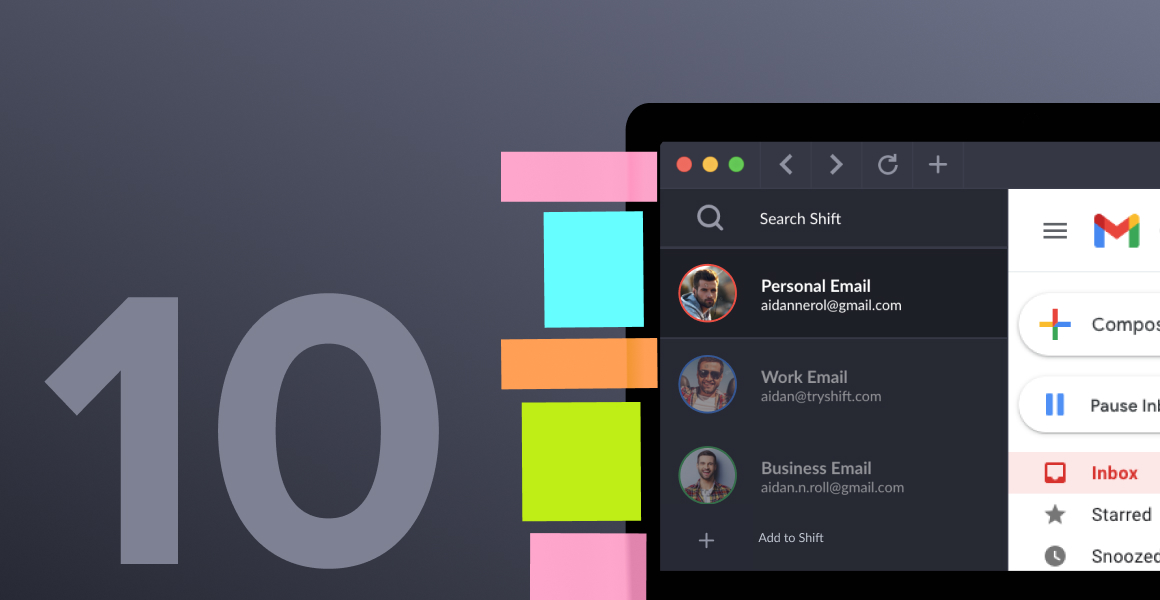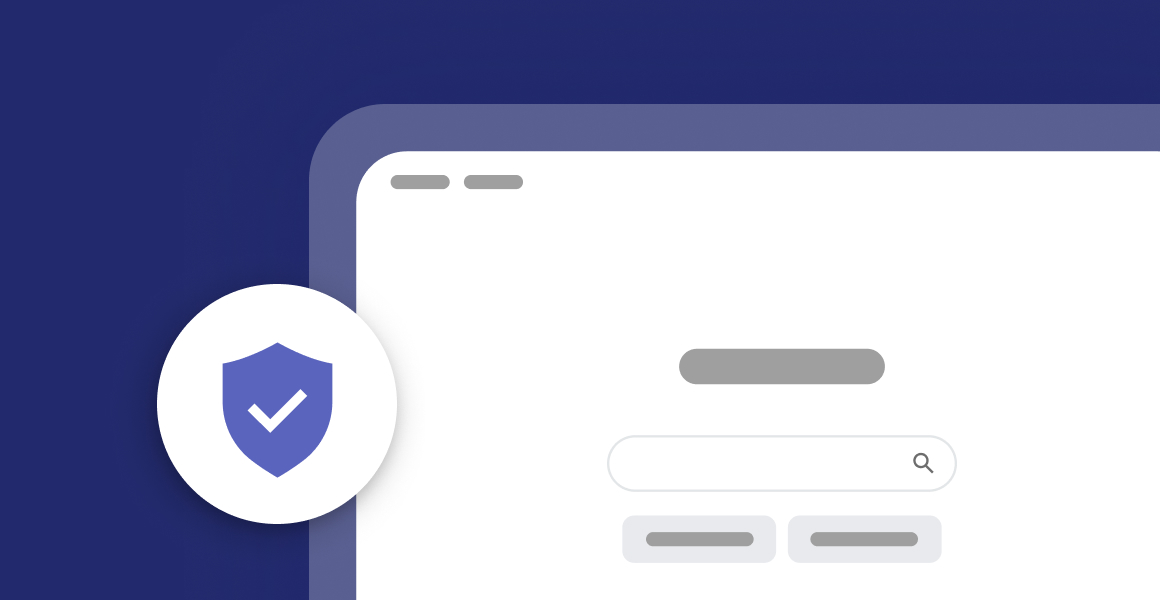How many tabs will you find open if you open your browser right now?
If you need to take a moment and count them up, that might be too many. And even if you don’t have too many open tabs, are you spending valuable time switching back and forth, logging in and out, or otherwise managing these tabs? Though there is no optimal number of tabs that people should work within, some optimal browsers and other best practices can ensure that multiple browsers are boosting your productivity instead of killing it.
In this post, we are covering the best browsers for using multiple tabs, along with some other valuable information about how to best manage multiple tabs.
Multiple Tabs Have Become the Default
There are a lot of reasons people tend to leave too many tabs open on their browser. One of the biggest reasons is that it allows them to multitask and switch between different websites or tasks quickly - even though we now know that multitasking can be less effective.
By keeping multiple tabs open, users can readily access information, articles, or websites they plan to revisit later without having to go through the process of finding them again. Plus, a lot of people experience a fear of missing out (FOMO) and keep tabs open as a reminder to read or further explore certain content. Several people also say they find it difficult to close tabs because they worry about losing important information, references, or links.
The truth is that in recent years, the habit of keeping multiple tabs open has become even more common. Even in the face of increased use of personal devices like phones and tablets, the availability of high-speed internet and the proliferation of web-based applications have provided more opportunities for people to explore and engage with online content. This increases the likelihood of leaving tabs open as users navigate various websites, articles, social media platforms, and work-related tasks. Additionally, the development of tab management features in modern browsers has made it easier for users to organize and keep track of multiple tabs. However, it is important to note that excessive tab usage can also have negative consequences, such as increased memory usage and decreased browsing performance (more on that below). Therefore, it is advisable for individuals to periodically review and close unnecessary tabs to maintain a more efficient browsing experience.
The Problems With Multiple Browser Tabs
Having too many tabs open can lead to very real consequences. While many users just find multiple tabs annoying and want to streamline, there are other reasons why reducing your browser tabs is a helpful process.
For one thing, multiple browser tabs can mislead you about your own productivity. Having several tabs open (or “tab hoarding,” as some experts call it) can make you feel like you’re doing a great job of multitasking - but that’s probably not true. Too many people are convinced they can seamlessly juggle multiple tabs and jump between tasks without losing focus. We don’t think of tabs as digital clutter; rather, they are a reflection of our to-do list and ongoing priorities. They capture our anxiety about work-related tasks or our aspirations for being well-read, more adventurous, or smarter. Tabs provide a snapshot of what’s important to us in our daily lives. If we have multiple tabs open, it’s easy to feel like we are making progress across each area - but multitasking is often overrated. Studies actually show that multitasking doesn’t work - it often makes people less efficient and prone to mistakes. In fact, research has shown that only 2.5% of people can multitask effectively. Unless you’re part of that small percentage, you’re better off prioritizing and limiting your tabs and your efforts to multitask. While you feel more productive, you’re likely just kidding yourself.
There are more technical issues with multiple tabs, too. Every system that you use on your computer or device requires resources. You may have noticed that performance suffers when you have several tabs open. That’s because opening too many tabs puts a strain on your computer’s CPU. Each tab open in your web browser is consuming some amount of your system’s memory. That means the more tabs you open, the more RAM your browser will consume. Too many tabs can make things run slower or cause your system to crash. It’s worth noting that the number of tabs your system can effectively support depends on a couple factors, namely:
- Your computer’s hardware - A computer with 4 GB of RAM has a lower performance than a computer with more RAM, like 8 GB. Computers with more RAM can provide more resources to support more tabs, while those with less RAM will struggle.
- Web page graphics - Images require support from your system. If a web page has a lot of graphics to render, it will require more resources from your computer. These sites can put a strain on your system that impacts performance. Some good examples of sites that are troublesome to just leave open include Google Maps or Google Earth.
You also need to be extra cautious when using multiple tabs (or otherwise multitasking online). It can be easy to lose track of what you were doing, when. You may not remember which tabs you left off, or which ones have your password saved. If you have a lot of items to copy and paste, you need to make sure you are doing so correctly. This is particularly true if you work with sensitive data that should remain private. If you have access to client data, for example, it’s probably frowned on for you to have other tabs open in order to leave less room for error.
Related Post: Too Many Tabs Open? Try These Browser Management Tips
The Best Browsers for Multiple Tabs
Some browsers are better than others at helping users manage multiple tabs. If you tend to use several tabs when working or browsing the internet, it’s a good idea to take advantage of features that were thoughtfully designed with tab use in mind. Here are our top suggestions:
Shift
Shift was designed as a productivity tool and helps with tab management through innovative features like custom Workspaces. You can connect the exact tools and apps you use, and then organize them in the way that works best for you. You can also skip logging in and out of multiple accounts and work with the apps you already rely on like Asana, Trello, Slack, and many more.
Google Chrome
This browser is known for its fast performance and stability, even with a large number of tabs running. Chrome offers multiple tab management features such as tab grouping, the ability to pin tabs, the ability to search for specific tabs, and more. This makes it easy to organize and find the content you wanted, rather than starting over. Chrome also has several extension and customization options which allow you to enhance tab management capabilities, allowing you to personalize your overall browsing experience.
Mozilla Firefox
Firefox has a range of customization options such as the ability to personalize the tab bar, install add-ons for better tab management, or create your own custom keyboard shortcuts. This browser is also known for better privacy and security features like enhanced tracking protection, strict content blocking, and regular security updates. If data security is one of your priorities, you should take a closer look at Firefox. Finally, Firefox also allows users to easily switch between tabs using keyboard shortcuts, which means it’s more convenient for multitasking and fast navigation.
Microsoft Edge
With Edge, you’ll see a lot of features like tab grouping, vertical tabs, and the ability to search for open tabs, making it easier to organize and work within multiple tabs. Designed to be fast, efficient, and resource-friendly, users say Edge offers a smooth browsing experience even with multiple tabs open. Of course, as a Microsoft product, Edge seamlessly integrates with other Microsoft services like OneDrive and Microsoft 365. This allows for easier collaboration and productivity across the entire Microsoft suite of products.
Safari
Known for energy efficiency and longer battery life (especially on Apple devices), Safari syncs with open tabs across Apple devices using iCloud, which enables users to access their browsing sessions from other devices. This can really cut down on searching and opening new tabs on your desktop. Safari also offers keyboard shortcuts for switching between tabs, which means navigation and multitasking go much more smoothly.
Related Post: 10 Browser Hacks to Simplify Your Life
Other Tips for Tab Management
Modifying your own behavior is more important than any tip or tactic we can give you. You may want to assess the way you think about the tabs you keep open in your browser. As convenient as having certain tabs open all the time, you’ll likely find a lot of value in considering what is necessary and cleaning up your desktop. You can also try a few of these tactics:
Make use of Shift Workspaces
The majority of people have some repetition in the kinds of links that they open. For example, people tend to access the same type of documents, databases, websites for work, bank accounts, etc. If you find yourself completing processes that require navigating to multiple pages, there is room to automate and save time. For example, if you consistently go to websites A, B, and C to complete a specific task, you can set up a Workspace in Shift to save browser tabs and easily open and close them all at once. This is also helpful in limiting distractions from other sites.
Make (better) use of bookmarking
Bookmarking is a really helpful feature that many people don’t utilize. Make it a habit to bookmark your commonly used sites. This provides easy access and the ability to quickly reopen tabs. Since many people leave browsers open because they are afraid they won’t be able to find the page again, bookmarking can make a big difference. Additionally, most browsers allow you to quickly reopen tabs by hitting Control-Shift-T. You can even bookmark in bulk to save tabs for later.
Set a tab limit
Figure out the optimal number of tabs for you. You might have a higher tolerance for open tabs than someone else. What is the number of open tabs that starts to stress you out? The median number according to the study we cited was 8 tabs. It might be more or less for you. Keep this number in mind and open and close tabs accordingly. Commit to yourself that you won’t have more than that number of tabs open at any given time. That means if you open a new one that is exceeding your number, you should close one.
Uncover memory hogs
All web resources will use a different amount of memory. You may want to look into how much memory a specific site is using, and most browsers give you a way to do so. Then you can prioritize which tabs you really need open, and begin to close tabs that are taking up too much memory.
Add to-dos to a task management app
Many people end up leaving tabs open as a reminder to do something. In this case, there’s not much point in just leaving tabs open until you’re ready to take action. Consider adding a link to your task management app by using a tool like Zapier’s Push Extension. To use this, simply copy the URL, choose the extension, and paste the link. Later on you’ll be able to find the link quickly in your to-do app. This way you’ll have those resources available when you actually need them, not just hanging around in your browser taking up space.
Go Beyond Your Basic Browser
We would tell you to limit your browser use to just one or two tabs, but we know that’s nearly impossible. Just like you won’t let your desk get too cluttered (or at least, you shouldn’t) you don’t want to let your desktop get too crowded with browser activity. For that reason, you might need to go beyond your default browser and look at some options that can streamline your entire work process for increased productivity - like Shift.
Shift allows users to organize and streamline tabs by account or project and keep context while avoiding distraction. It’s a great way to take back control of your tabs and conquer the digital clutter. It’s a powerful way to remain organized and enjoy a browsing experience that’s created for efficiency and focus.
The best way to think of Shift is as an aggregator. It embeds all of the web-based apps and sites that you already use for productivity into one single browser. For example: email, messaging, project management, social media, content creation, analytics tools, and so much more. Even better, you can add multiple accounts from each platform, like Gmail, Yahoo 365, etc. From there, you can perform tasks that are not as easy to do with a simple web browser. For instance, you can use unified search to scour all of your email accounts simultaneously, showing you specific results and the accounts they come from.
Additionally, you can use Shift to create proprietary Workspaces. Workspaces allow you to easily access and store tabs and bookmarks. You can keep your most important tabs on-hand and organized by Workspace, then bookmark them for quick use later on. Additionally, you can keep your work and personal functions separate and organized. Sort tabs by account or keep them organized in Workspaces. That means you can create one Workspace for all of your work accounts - like Outlook, project management tools, and reporting platforms - and one for personal accounts such as Gmail and your banking apps. Think of your Workspace as a collection of your mission critical tabs, bookmarks, and apps. Create custom workflows with the exact tools you need, leading to increased focus and productivity. Everything you need, all in one place!
Related Post: The Web Browser Built for Power Users
Tab management is critical no matter which browser you’re using. Having too many tabs open leads to disorganization and mismanagement, which can cause a variety of problems. In an effort to save time and be more productive, you might actually be hurting your overall organization and losing time. Try using Shift to make the most of the tabs you use daily. Shift is an innovative platform that can be used for a better, more organized digital experience. You can use Shift to limit distractions, keep important context in your web tabs and apps, and increase overall efficiency.



















 Share on Facebook
Share on Facebook Share on Twitter
Share on Twitter







